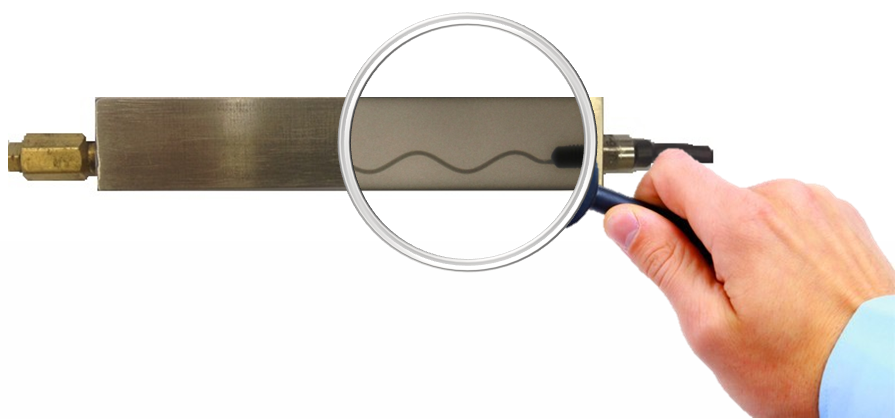The effective Structural Health Monitoring system
A new innovative Usage and Structural Health Monitoring system has been developed and patented at the Vrije Universiteit Brussel. 3D curved capillaries are embedded in the structure while printing. A pressure sensor is installed at the capillary end and continuously monitors the capillary pressure.
Structural Health Monitoring by eSHM
The capillary is pressurised at a pressure different than the ambient conditions. A fatigue crack propagate through the component and will breach through the well-positioned capillaries. The capillary pressure is very sensitive to the smallest leaks. Upon detection of the crack, the machine can be safely stopped before a safety critical failure occurs. By extension, the system can be used for the monitoring of excessive wear.
Usage Monitoring by eSHM
In addition to failure detection, the same system allows for Usage Monitoring of the part. Under the acting loads, the capillary will deform together with the structure in which it is embedded. These deformation induce measurable pressure variations inside the capillary that can be related to the loads acting on the structure. Such a system allows to compare the actual loads to the design loads, allows counting fatigue cycles and alert the operator for excessive load cases that will contribute to fatigue problems. Possible fatigue problems can thus be prevented on the basis of the load history of the part.
Competitive advantages of the eSHM system
- Robust: the capillaries form an integral part of the structure and are less prone to accidental damage, contamination of grease, dirt, oil, etc.
- Maintainability: Although the capillaries are integrated, the pressure sensor can be positioned at a maintainable spot and can easily be interchanged.
- Offline capability: There is no requirement for continuous monitoring and data storage.The pressure inside the eSHM system can be interrogated at any desired time. The system exhibits a memory function since a loss of capillary pressure will remain detectable.
- Low installation cost: The system only requires the integration of capillaries during manufacturing of the component and the connection with an off-the-shelve available pressure sensor.
- Ease-of-interpretation: The operating principle is based on the data analysis of a single pressure sensor that may not surpass preset limits.
- Multiple site inspection: The capillary networks can be interconnected to be monitored with a single pressure sensor.



